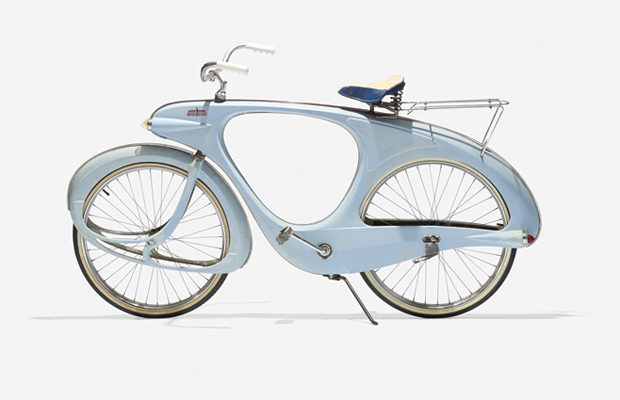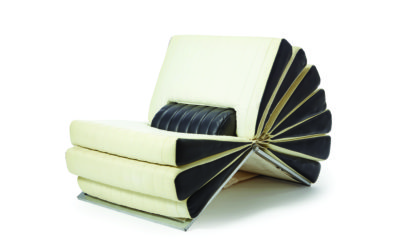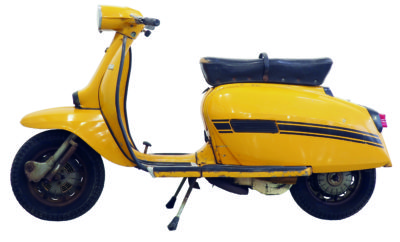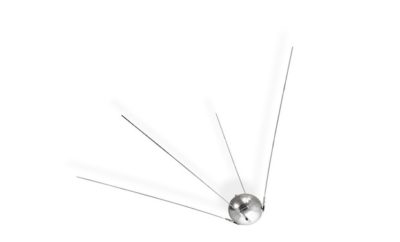Use your ← → (arrow) keys to browse
Downhill racer
While the car industry boomed, Bowden became more interested in the push-bike. Its tubular structure had remained essentially unchanged since the turn of the century and required detailed and skilled handwork to produce. Bowden saw it nearing extinction in the new technological age and so devised a design that could be mass-produced. The Spacelander had a hollow body constructed from two pressed-steel halves fused together, creating an internal space that allowed for the integration of electrical components. The body on the original model housed an electric rotary device that could charge a battery during downhill motion, storing energy that could later be used to aid the rider during uphill climbs. The Spacelander was also equipped with battery-powered lights, a horn, and built-in radio. The concepts Bowden developed for the bike would later resurface in Corradino d’Ascanio’s design for the Vespa.
Use your ← → (arrow) keys to browse
 Lot 259 Wright “Modern Design” sale, Chicago, March 28, 2013: Spacelander bicycle designed by Benjamin Bowden in 1946 and manufactured by Bombard Industries in 1960. Estimated at $5,000 to $7,000, the bike sold for $35,000.
Lot 259 Wright “Modern Design” sale, Chicago, March 28, 2013: Spacelander bicycle designed by Benjamin Bowden in 1946 and manufactured by Bombard Industries in 1960. Estimated at $5,000 to $7,000, the bike sold for $35,000.












